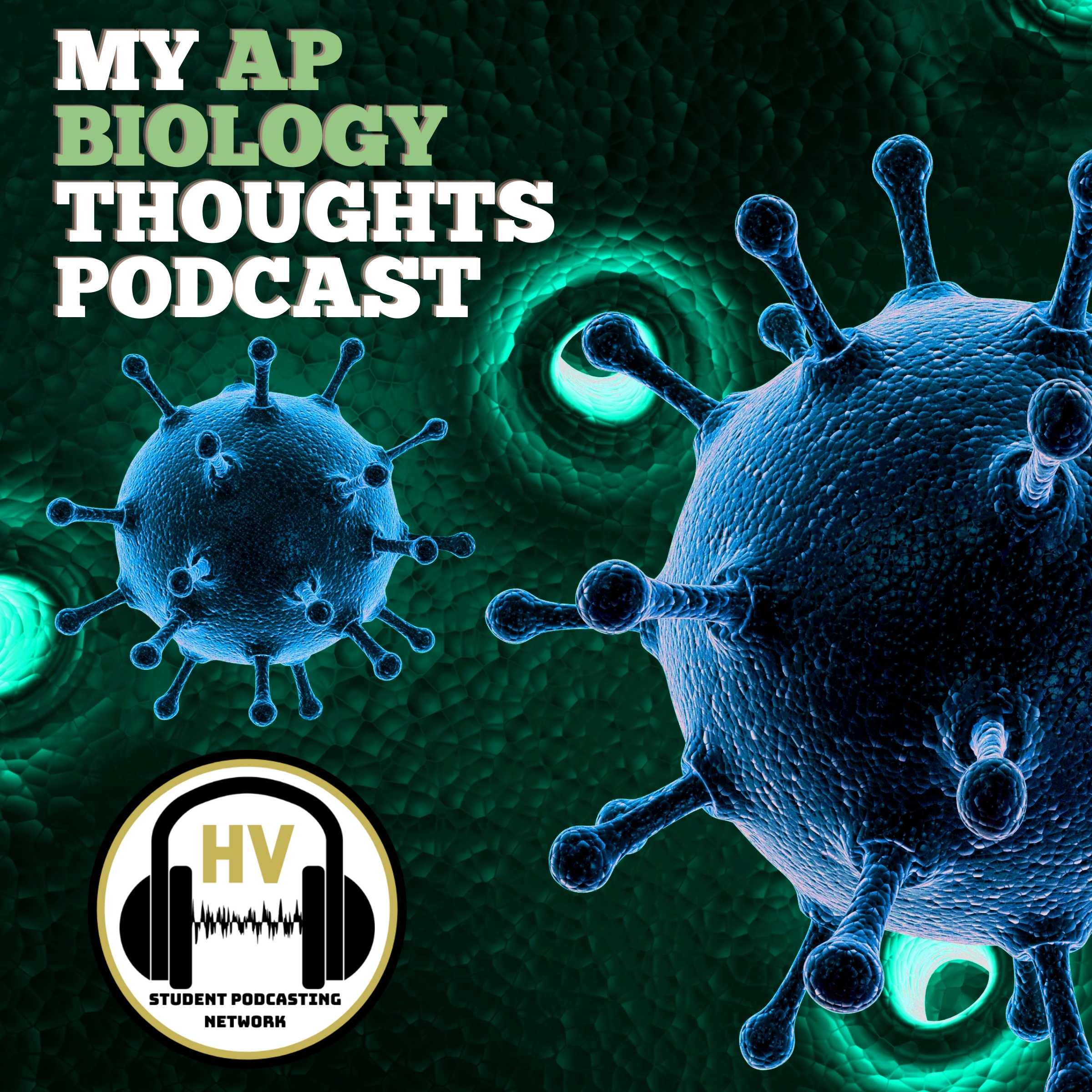Examples of Evolution: Butterflies and Parasites
Description
My AP Biology Thoughts Unit 7 Natural Selection EPISODE TITLE: Butterflies and ParasitesAnushka Agarwal, Olivia Lundquist, & Hana Hamid
Welcome to My AP Biology Thoughts podcast, our names are Anushka, Olivia, and Hana and we are your hosts for Unit 7: Examples of Evolution-Butterflies and parasites. In episode 114, we will be discussing Butterflies and parasites and how they relate to the AP Biology Curriculum.
Segment 1: Overview of Butterflies and Parasites To start off, what is evolution? Evolution is the process by which different organisms develop from their ancestors to adapt to the environment they are living in. This idea was proposed by Charles Darwin to explain how species have the ability to evolve. We can look at the Blue Moon butterflies for examples and how they adapted to their environment to protect themselves from the killing parasite. The Blue Moon Butterfly, or Hypolimnas bolina, is an eggfly commonly found in New Zealand, Australia, New Guinea, Solomons, etc. The blue moon butterfly’s mating season is normally in the spring and summer. Their name is derived from the 2 bright circular patches on the backs of the males. Natural selection occurring between the butterflies and parasites is an example of evolution happening in real time. This is because scientists discovered that the bluemoon butterflies developed resistance in a span of 10 generations (which lasted a year). Additionally, the peppered moth is a species of a night-flying moth which is most commonly found in the northern hemisphere in countries such as Europe, Asia, and North America. They are generally small moths (only 1.5-2.5 inches) and their eggs normally hatch during mid summer. While some moths are typically light in color, many have dark skins and normally have extra camouflage to protect them from their predators (which includes flycatchers, nuthatches, and European robin). We can see a difference in the colors of the peppered moth due to the Industrial Revolution marked an era of industrial change in Europe and the United States from 1760-1840, which affected not only economy but the environment as well.
Segment 2: Evidence that supports Evolution of Butterflies and Parasites mutationthe changing of a structure of a gene that may result in a variant form → can have impact bc it has the potential of getting passed down that leads to evolutionmutation: males can survive the infection of parasite that kills male embryosnormally they cant(mutation allowed for them to live and complete term/live)Natural selection (blue moon butterflies) Since the parasites normally targeted male blue moon butterflies, their population was a staggering 1%. However, because these butterflies obtained immunity from the parasite, their population bounced back to 40% in less than a year! natural selectionli...
More Episodes
Published 06/08/23
My AP Biology Thoughts Unit 8 Ecology EPISODE TITLE: Birds of Paradise Mating RitualsWelcome to My AP Biology Thoughts podcast, my name is Xavier and I am with Celine and Sofie and we are your hosts for Unit 8 Ecology-Birds of Paradise Mating Rituals. Today we will be discussing Birds of...
Published 12/21/21
My AP Biology Thoughts Unit 8 Ecology EPISODE TITLE: South African Rhino PoachingWelcome to My AP Biology Thoughts podcast, my name is Keenan Wallace and I am your host for this episode called Unit 8 Ecology-Threatened Rhinos in South Africa. Today we will be discussing South African Rhino...
Published 12/21/21


